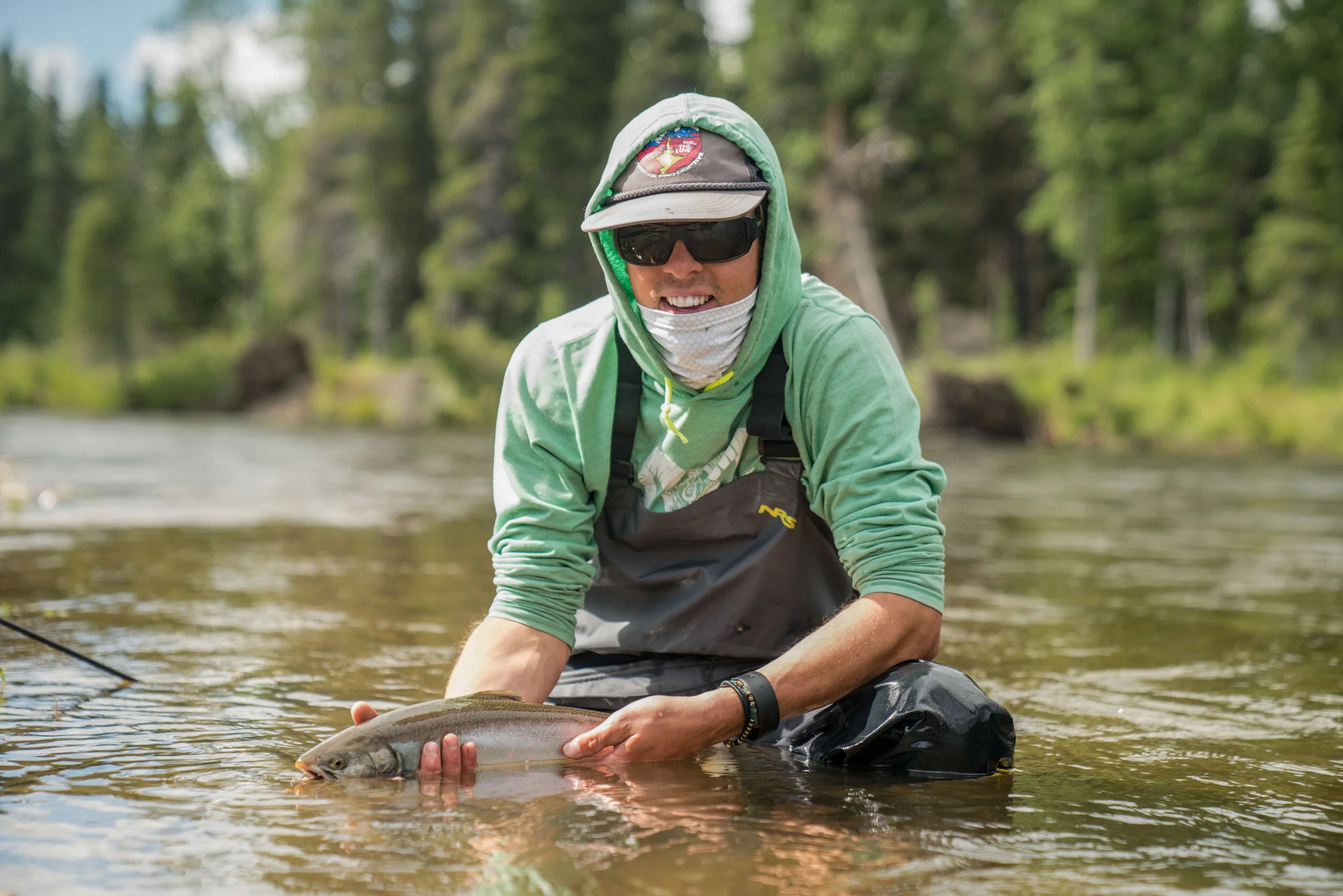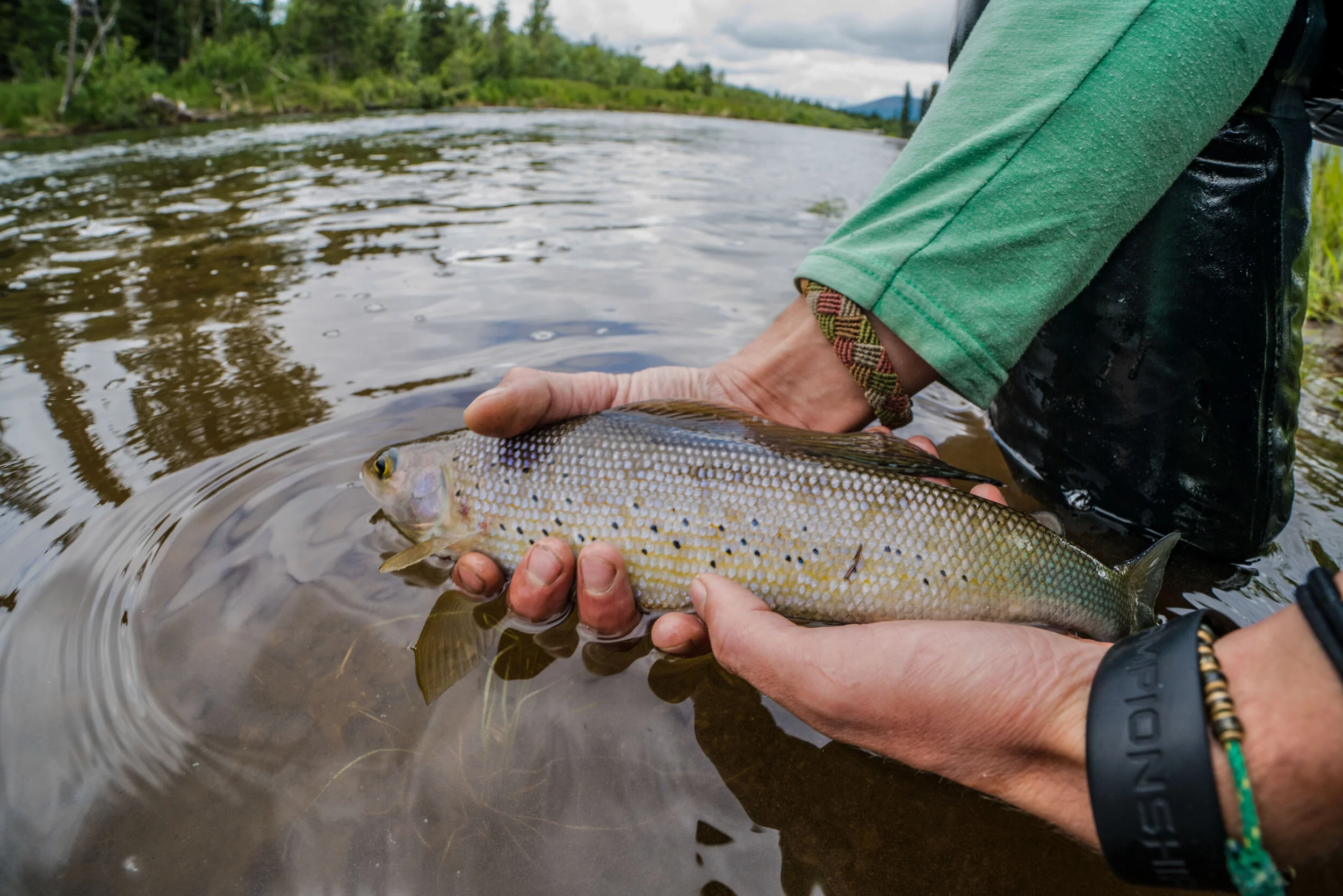Bristol Bay Ambassador, Brendan Wells, produced the film “Koktuli Wild” showcasing the region and the impacts the proposed Pebble mine would have on the sportfishing industry.
Alaska grown kayaker, white-water adventurer and angler, Brendan Wells, caught our attention earlier this year when his company, Mountain Mind Media, released an outstanding film documenting the Koktuli River and exploring the issue of the proposed Pebble mine. The Koktuli River is immediately downstream of the proposed Pebble mine site and will be adversely impacted by mine operations and forever threatened by the potential of a tailings dam breach.
Wanting to learn more about Brendan, his trip down the Koktuli River, and his inspiration for the film, we reached out to Brendan with the request to entertain a few questions and were pleased that he agreed. Read more about Brendan, his story, and the trip down the Koktuli river in the interview below.
Company/position:
I am the owner/director/producer/do-it-all-guy at Mountain Mind Media.
Home City:
Trout Lake, WA / Cooper Landing, AK
Tell us about your business/career:
Over the past eight years my passion for photography, cinematography and the outdoors kind of accidentally developed into my current business and now full-time career. I grew up floating down rivers in Alaska and Washington and always had either a camera or fishing rod in my hand on these trips. As I began to seek more stories to tell with my camera, naturally they were almost all based on rivers and fish. Unfortunately, many of these stories were based on threatened watersheds that are important places in my life and community. Now, much of my work is focused on sharing these stories, from salmon habitat restoration projects throughout Washington and the Columbia River watershed, to the threats in the Sacred Headwaters of British Columbia, to preserving salmon streams throughout Bristol Bay and Alaska. Education and conservation are now the biggest themes of my work alongside exploration and adventures to remote places of the world.
What was your inspiration for digging into the proposed Pebble mine and getting on the
ground?
Originally it was a call to action from Jerry Jacques who operates Bristol Bay Sportfishing in Iliamna. A mutual friend put Jerry in contact with me because he wanted to support and help produce a film to educate others of a place that is near and dear to him and, of course, his business. Having followed the fight against Pebble for years, I immediately took the opportunity to put my skills and background to work. Jerry graciously provided us with insider knowledge and flights around the entire proposed mine site, transportation corridor and to the river so that we could explore and document it first hand. After our first trip to Iliamna in May, we were inspired by the momentum locally and throughout Alaska to stop Pebble. So, we returned for several weeks in July to speak with locals and spend as much time as possible on the river. Our goal was to document the area and make the whole project scope more tangible to those who may never get to see first hand the proposed mine site and watershed below Pebble.
What was your biggest takeaway from your time on the Koktuli River when filming “Koktuli Wild”?
I've been lucky enough to have floated and fished many salmon streams and rivers throughout Alaska. Especially compared to the fisheries in Washington and the Pacific Northwest at large, I am always blown away by the abundance of salmon and related wildlife in Alaskan Rivers. But nowhere else that I've been in Alaska is as abundant with life as the Koktuli River. The river was teeming with all five species of pacific salmon, grayling, dollies, rainbows, and char. I counted more bird species than any other river trip I've done in Alaska and bear and moose tracks were prolific on almost every beach. It quickly became clear to me how this rich ecosystem, untouched by development, supports the enormous commercial fishing industry and subsistence fisheries. Also, floating all the way from the proposed mine site and headwaters of the Koktuli River, into the Mulchatna River and down almost the entire Nushagak River, I realized how important the Koktuli is to supporting the famous Nushagak kings and sockeye runs and how the impacts from Pebble would directly and immediately impact the watershed.
An Arctic grayling found on the Koktuli River.
What is your favorite species of fish to catch in Bristol Bay & why?
Dolly Varden were probably my favorite fish to catch on the Koktuli because I had a lot of fun experimenting with different flies and methods to catch them, and the majority were big and aggressive. I also love to catch sockeye, which play a massive role in the Bristol Bay watershed and as a staple food of my and many other Alaskan's diets.
What do you wish others knew about Bristol Bay?
I wish people knew more about the history of the Bristol Bay region and how it has played such a major role in Alaska Natives lives for millennia and still does to this day. I also wish people knew more about the history of fisheries management in Bristol Bay and how good management practices have brought it back from being overfished in the early 1900's to a sustainable commercial fishery today. An important part of the management strategy that keeps the salmon runs healthy is limiting development, particularly in the salmon spawning areas and especially limiting development of projects with the size and impact that Pebble would have.
When you think of the future of Bristol Bay, what gives you a sense of hope? What makes you
concerned or worried?
What gives me hope about the future of Bristol Bay is the unity of people from all walks of life and political backgrounds to fight for sustainable fisheries as opposed to a short-lived mine. What concerns me the most is seeing the same mistakes that were made in the Pacfic Northwest being made in Alaska - short-sighted industrial gain versus the long term health of salmon populations.
You have been releasing some rad and rowdy footage in the Flowstate series with Mountain
Mind Media which included “Koktuli Wild” and “Class 5 Fly Fishing” on the Newhalen River (also
worth a watch). Will you be continuing the Flowstate series, and can viewers expect more
floating and fishing adventures in Western Alaska?
Unfortunately, our plans to return to Western Alaska had to be changed due to the exceptionally low water and dry summer. However, we were able to run some rowdy rivers near the Wrangel St. Elias Mountains that we will be documenting in season two of the Flowstate series. We also have big plans to return to the Bristol Bay area to run more rapids and waterfalls for a follow up to "Class 5 Fly Fishing." So stay tuned for more soon!
Anything else you want Save Bristol Bay and Trout Unlimited readers to know?
If you ever have the chance to visit Bristol Bay and float or fish any of the numerous rivers near the proposed Pebble Mine site, do it. I'm sure your mind will be blown like mine was on my first and every subsequent trip out there.
Lastly, ponder this scenario... you are gifted a season to fish the Bristol Bay region, the hitch
being you can only pack 1 fly. What fly do you bring?
I'd have to bring an Egg Sucking Leech - every hungry fish seems to love this one!
Watch “Koktuli Wild” and more films from Mountain Mind Media at their website and follow them on Facebook for updates and new releases.



